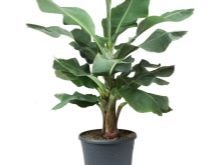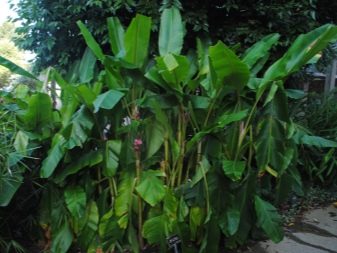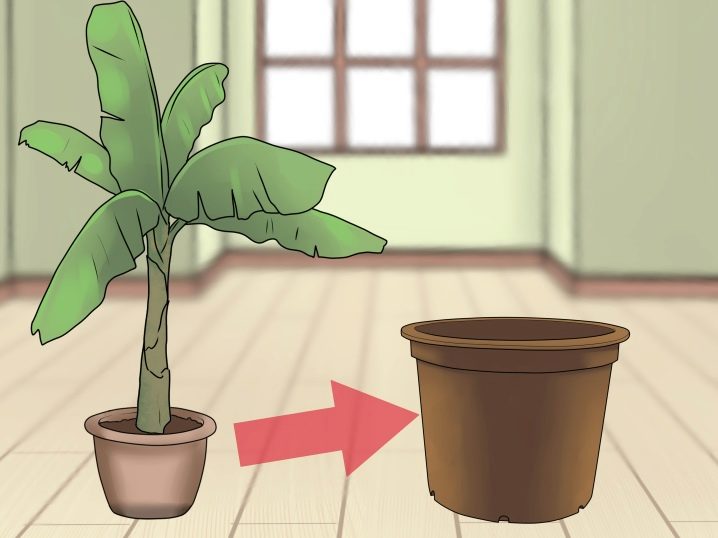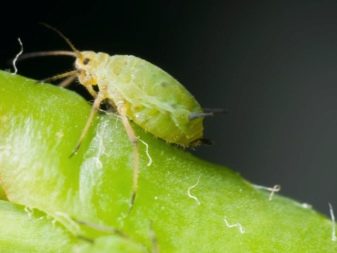What are banana palms and how to grow them?

Banana is a bright yellow fruit well known to everyone. Despite the fact that it is exotic, it is no less popular in our area than pears and apples. However, not everyone knows what banana palms are like and how to grow them properly.

There are many misconceptions about this plant. Its breeding within the framework of indoor floriculture is no less interesting.
Types and varieties
Many novice gardeners and florists are interested in the opportunity to grow a real exotic fruit. In this case, the key questions boil down to how quickly a palm tree grows and how many times it can bloom and bear fruit. It is important to start with the fact that this unique plant is native to Africa and Southeast Asia. Their lifespan reaches 40 years, and the richest harvests are removed in the first 5 years from young specimens. Our bananas are grown mainly for decorative purposes, since the fruits do not ripen due to climatic conditions.

Despite the fact that this plant looks like a tree, and many call it that, it is herbaceous. All varieties of bananas fell into this category due to the lack of wood as such on the stem (trunk). The latter is a tightly adjacent leaf plates and petioles, which dry out over time and become noticeably darker.

By the way, banana is the second tallest herb, second only to bamboo.
The appearance of a palm tree is directly determined by the variety. The height, thickness of the stem and the size of the leaves depend on the variety. So, dwarf species reach heights in the range of 1.5-4 meters. The following varieties most often act as indoor plants:
- Brazilian and Jamaican;
- "Lady fingers";
- Gran Nain;
- Rajapuri;
- "Kiev dwarf";
- Cavendish;
- hybrid "Williams";
- "Red".



All currently existing species are divided into two categories: fruiting and decorative. The latter, in the overwhelming majority of cases, become houseplants. The most popular ornamental varieties are Musa Velutina, Violet (Musa Violacea), Bright Red (Musa Coccinea) and Lavender (Musa Ornata). Naturally, this is not a complete list of cultivated species today.




Landing
In this case, the implementation of the appropriate agrotechnical techniques provides for the presence of:
- offshoot of a tree (root offspring) or seeds;
- nutritious (fertilized) soil mixture;
- rather large containers;
- complex feeding.


It should be noted right away that attempts to grow a banana from seeds taken from a purchased overripe fruit will not bring any results.
It is generally accepted that such material is not capable of germinating. However, in fairness, it is important to note that there are disputes on this issue, and there is no single opinion yet.
At the initial stage, it will be necessary to properly prepare the container for planting and the soil. The latter should be as light as possible and, of course, nutritious (fertile). When it comes to growing an offspring, then initially it can be planted in a relatively large pot. In any case, as the palm grows, it will have to be transplanted into more spacious vessels.

If the choice is made in favor of seeds, then the presence of a hard protective shell (crust) should be taken into account. To ensure access to moisture and the ability to hatch, the sprout will have to be disturbed. For this, gardeners and florists successfully use a knife, needle and even sandpaper. It is important not to pierce the shell completely so that the seed does not die.
The next important step is to decontaminate the soil and seed. For this, potassium permanganate is most often used, which is used for processing both seeds and prepared soil. It is also important that the containers used for planting are sterile. Otherwise, the risk of seed death during the germination stage increases.
Very often, flower growers make mini-greenhouses, which allows them to accelerate germination and simplifies the creation of the desired microclimate. The procedure in this case is as follows:
- pick up small plastic cups or containers and make holes in their bottoms;
- lay a drainage layer of expanded clay, fragments of dishes or small stones;
- pour a 5-centimeter layer of soil mixture from clean river sand and peat in a ratio of 3: 1;
- place seeds in the ground.

All that remains is to cover the containers with glass. It is important to remember here that there must be a sufficient distance between the soil surface and the glass for germination.
Care
All representatives of the flora, to one degree or another, are demanding on the conditions of detention and the implementation of the rules of agricultural technology. Naturally, the described plants are not an exception, and they must be properly cared for. If we are talking about a pet in a pot, then first of all at home you need to create an appropriate microclimate. Another important point is constant monitoring of how quickly the palm tree grows, develops and blooms.
Particular attention should be paid to preparing plants for winter. It is important to fill the root zone with dry sawdust on time. It is best to cover the ground part of the palms with cardboard boxes. It will be useful to strengthen the structure with cling film. The main task here is to protect the root system from freezing. In terms of care, the winter period differs only in the intensity of watering.

Conditions
To grow a beautiful and healthy little palm tree in an apartment, you will first need to focus on two key points.
- Temperature conditions. Optimum thermometer readings range from +23 to +28 degrees in summer. In winter, these values drop to 17-20 degrees. The key to full development is a suitable temperature and high humidity.
- Lighting. In their natural habitat, bananas grow and fully bear fruit mainly under the scorching sunlight. It is predictable that at home the plant also needs a lot of light, the lack of which will negatively affect growth rates, development and even life span. Naturally, a south-facing window sill is ideal.


Watering and moisturizing
The irrigation characteristics of banana trees are determined by the season. In the summer season, watering should be abundant and fairly frequent, while in winter, these procedures become moderate. An important factor here will be the degree of soil drying.
Particular attention should be paid to the quality of the water used for irrigation. It must first settle for at least a day, and its temperature must be several degrees above room temperature. It has been proven by many years of practice that when optimal conditions are created, a banana palm tree in a pot will delight the grower with fresh leaves every week. By the way, that is why she became the record holder among indoor plants in the context of the pace of development.
Creating a favorable microclimate is not just about watering. An equally important point is a suitable air humidity. The first signs that it is excessively dry indoors will be tarnishing and drying along the edges of the leaf plates.
When such symptoms appear, it is required to immediately increase the humidity, arranging effective water procedures:
- washing palm trees in the shower;
- regular spraying;
- wiping the leaves with damp, but (most importantly!) soft napkins or cloth.


There is another simple, but at the same time the most effective way to create the right moisture.
- Pick up a fairly large container in the form of a pallet.
- Place a pot with a palm tree in it.
- Cover a vessel of the appropriate size with pebbles, expanded clay or any material that will absorb moisture well and retain it. By the way, it would be nice to use wet moss in such a situation.

As a result of such simple manipulations, the plant will constantly be in a humid environment.
Top dressing
In this context, it is worth recalling that all representatives of the large banana family are distinguished by record-breaking active growth. This predictably determines the equally outstanding "appetite" of plants. In the summer months, palms require weekly fertilization and monthly fertilization in the winter months.
You can feed the plants with such natural remedies as humus, mullein, ash, etc. Experienced gardeners and florists strongly recommend avoiding the use of chemical components. Such baits will have an extremely negative effect on the growth and development of plants.

Transfer
Ornamental bananas are considered to be long-livers. However, this does not exclude the need for periodic plant transplantation. It is due to record-breaking rapid growth, early and abundant flowering and similar fruiting. It is important to remember that instead of an obsolete individual, many healthy and strong shoots often appear, which must be transplanted into separate pots in a timely manner.

It is necessary to transfer an adult banana palm to another place and even just renew the soil in the fall. And such agrotechnical techniques are strongly recommended to be implemented annually. The fact is that the described palm trees actively draw out all the nutrients from the soil, and as a result of its depletion, growth slows down and often stops. As soon as this begins to happen, you should immediately transplant the banana into a large container. As a rule, after a year the plant will need a container with a volume of about 40 liters.

When choosing a suitable container, it is recommended to keep in mind that the roots of a banana tree require a lot of space. Do not forget about the drainage holes and the corresponding layer on the bottom. A slightly acidic or neutral soil will be optimal for the plant.
This mixture includes:
- soil (well suited for acacia, walnut and linden) - 1 bucket;
- humus - 1 l;
- coarse sand - 2 l;
- wood ash - ½ l.


In order to get rid of harmful insects, experienced gardeners advise spilling the resulting soil mixture with boiling water.
Reproduction
The plant in question, like the overwhelming majority of representatives of modern flora, reproduces vegetatively or by seeds. At the moment, there are three ways to breed bananas, namely:
- seeds (some varieties);
- division of the root system;
- offspring.



It is important to note that the first option is rather laborious and time-consuming. A serious, and in some cases insurmountable, obstacle on the path of a weak sprout becomes a hard, like a nutshell, outer shell. Based on this, a few days before planting, it is recommended to place the seed in warm water, after which scarification is performed, that is, sawing.
The seeds should be immersed in a moistened soil mixture, the components of which are peat, leaf earth, as well as washed river sand and charcoal. The depth of seeds is determined by their size.
For seedlings, it will be necessary to create greenhouse conditions by covering the container with glass or film and placing it in a place where the thermometer is at around 24-26 degrees. Spraying and airing procedures are daily. The first shoots will hatch in a month, and in some cases in two. As the sprouts get stronger, and 2-3 leaves appear on them, a pick can be carried out, given that the banana develops very quickly.

One of the simplest and most reliable breeding methods is to use rhizome offspring. A similar method is successfully applied during plant transplantation. It is at this stage that it will be easy to separate (carefully cut) healthy and strong layers from an adult. The main thing is to immediately process all sections with charcoal. It remains only to place the root offspring in a container with a soil mixture, consisting, as in the previous case, of peat, sand and leaf earth.

Frequent growing problems
One of the important points when cultivating these plants in apartments is the elimination of mold in the early stages of germination of seeds and offspring. If the first signs appear under the glass, it is necessary to immediately treat the soil with potassium permanganate and wash the shelter itself well. Similar measures are applied until the seedlings hatch and the offspring take root. By the way, during the first year, due to record growth rates, young shoots will turn into strong palms with a trunk diameter that can reach 15 cm.

It is important to recall that we are talking about a false stem, since it is a stem formed by several leaf petioles, which twist during the growth process.
Unfortunately, sometimes in the course of breeding the described species of palm trees (both in open ground and in apartments) one has to face attacks from harmful insects. Most often, plants are attacked by aphids, spider mites and weevils. The most effective pest control agents are pesticides. It is important in such cases to strictly follow the instructions of the manufacturers of the respective drugs.


It is worth noting that the described culture is disease resistant. Very rarely at home it is affected by anthracnose and viral mosaics. However, constant monitoring of the condition and appearance of the palm tree cannot be ignored. Even the slightest deterioration will indicate a deficiency or excess of something.
The following options are possible.
- Slowdown (to a complete stop) of growth and wilting of leaf plates - a lack of nutrition. You will need to fertilize and transplant the palm into a larger container.
- Shoots wither and leaves dry, the tips of which curl and turn yellow - lack of air humidity. It should be immediately increased by the methods described above.
- Leaves are small and dull - lack of light. Here you can use lamps for additional lighting.
- Leaf plates become soft and drooping - low temperatures and / or drafts.
- Darkening of the stem at the base - excess moisture, provoking rotting. In this situation, it is necessary to reduce the frequency and abundance of watering, otherwise the plant will die.
- Dark spots appear between the veins of the leaves - it is quite normal for bananas.


Summing up, it should be noted that banana palm is not the most difficult plant to grow and care for. Subject to the basic rules, it will become a decoration of any garden plot and interior. An exotic pet can surprise anyone, not to mention the effect that fruiting specimens produce.




































































The comment was sent successfully.